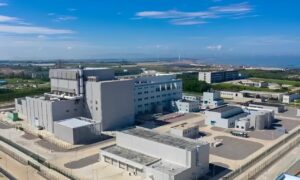ButSpeak.com
News which Matters.

China’s Tsinghua University has successfully tested the world’s first commercial pebble-bed nuclear reactor, showcasing its inherent safety by shutting off power and letting passive systems maintain control.
China’s Tsinghua University has set a new benchmark in nuclear safety by successfully demonstrating the inherent safety of the first commercial pebble-bed nuclear reactor. In a groundbreaking test, the reactor was shut down, allowing passive safety systems to control the reactor core without external power. This significant achievement highlights the advancements in nuclear technology and addresses key safety concerns associated with older reactor designs.
Traditional nuclear reactors, such as Pressurized Water Reactors (PWR), face significant challenges in emergency situations. These reactors require active intervention to shut down and rely on external power sources to operate pumps that circulate coolant. The coolant itself can present additional risks, as was evident in the 2011 Fukushima disaster. The Fukushima plant, an outdated 1970s design, suffered catastrophic failures due to an earthquake and tsunami, which incapacitated the backup diesel generators and prevented emergency crews from reaching the site in time. The breakdown of coolant water into hydrogen led to a chemical explosion and reactor core meltdowns.
In contrast, Generation IV reactors, like the Shidao Bay Nuclear Power Plant‘s high-temperature gas-cooled (HTGR) pebble-bed reactor, offer a fundamentally safer design. Developed by Tsinghua University in collaboration with the China Huaneng Group and the China National Nuclear Corporation, the pebble-bed reactor is designed to be inherently safe and incapable of a meltdown.
Unlike traditional reactors that use fuel rods and water coolant inside a pressure vessel, pebble-bed reactors employ spherical fuel pebbles made from layers of enriched uranium, carbon, and silicon carbide coating. Helium gas, which is chemically inert and remains gaseous at all temperatures outside the cryogenic range, serves as the coolant. This design allows the pebbles to withstand temperatures up to 1,600°C (3,000°F), while the reactor core itself cannot exceed this temperature.
The pebble-bed reactor’s safety mechanisms are both passive and self-regulating. If the reactor’s temperature increases, the atoms in the fuel move faster, causing Doppler broadening, which leads to the absorption of more fast neutrons and reduces the number of neutrons available to sustain the reaction. Consequently, the reactor’s temperature stabilizes naturally, preventing a meltdown.
This system, though not entirely new, builds on the German AVR power plant’s design, which operated safely for 21 years. The key difference is that the Shidao Bay reactor is the world’s first commercial pebble-bed reactor, whereas the AVR was experimental. In both cases, power was shut off to test the passive safety features, with successful outcomes.
During the Shidao Bay test, two pebble-bed reactors connected to a 210-MWe steam turbine effectively managed their own nuclear reactions and maintained safe temperatures. The core shut down within minutes, and both the reaction and temperature stabilized within 35 hours, with no deterioration of the nuclear fuel.
This successful demonstration marks a significant step forward in nuclear safety and technology, positioning pebble-bed reactors as a viable and safer alternative for future energy generation.